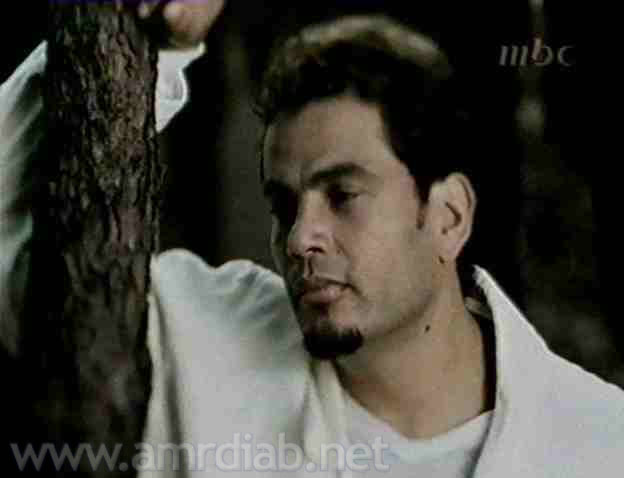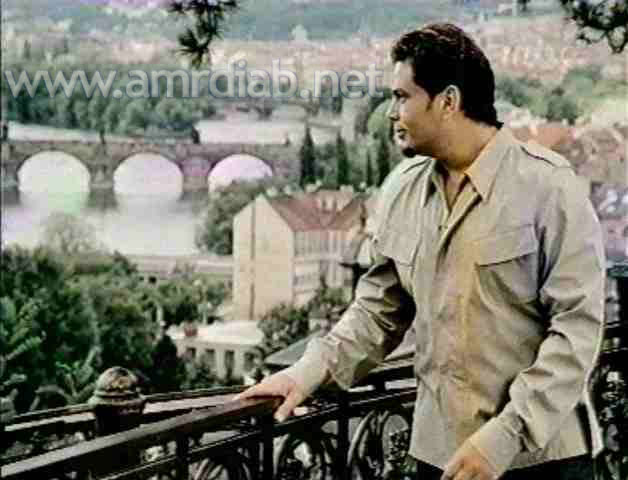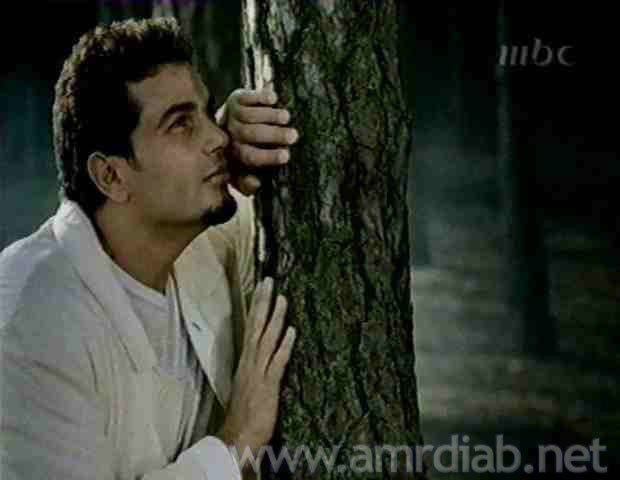|
He is not a star ,but a Super Star
 Amr Diab was born in Port Said, Egypt
into an artistic family. His father, Abdul Basset Diab, worked for the Suez Canal Corporation where he was chairman of Marine
Construction & Shipbuilding. He possessed a fine singing voice and encouraged the young Amr to sing.
One evening, when Amr was just 6 years old, his father took him to
the July 23rd Festival at Port Said There they visited the local broadcasting station and Amr made his first singing appearance
on Egyptian Radio performing the National Anthem "Biladi, Biladi". He was praised by the Governor of Port Said who awarded
him with a guitar as a prize.
In due course Amr began his
musical studies at the music faculty of the Cairo Academy of Art and from which he graduated in 1986. His first album "Ya
Tareeq" followed shortly. It was an instant success. There have been, since then, a further 16 top selling albums in a prolific
recording career which has established him as the super-star of the Arab world.
Amr has toured widely throughout his career organizing galas and performing concerts in countries as far flung
as Australia, Canada, Europe & the USA.
In 1990 Amr was chosen
to represent Egypt at the 5th Tournament of African Sports where he sang in English and French as well as Arabic. This concert
was televised by satellite throughout the Arab world and highlighted on CNN. He became the first Arab artist to make a video
clip and in a parallel career, has acted in several films including "Dhahk We La'ab" (Laughter & Fun), a film which opened
the Egyptian Film Festival in 1993. In this film, directed by Tarek Al Telmasani, Amr played opposite the world famous Egyptian
actor Omar Sharif. In the film "Ice Cream" directed by Khairi Bishara, Amr played the role of the main hero.
 The singer has already been the subject
of three biographies Amr Diab, the owner of my heart, The Rebellious and Amr Diab, Star of the 20th Century. His nickname
is Rebellious due, it is said, to comparisons made with his contemporaries, in all aspects of life - his clothes, hairstyling,
the performance and execution of his music, the melodies he composes and his many appearances at parties.
Amr became known for the new 'style' of his music which the Arabs came to call "Mediterranean
Music" referring to its blend of Western and Arabic rhythms. He was named, by most satellite and TV stations, as the Best
Singer in the Arab World throughout the nineties and continually sets new Arabic sales records with successive album releases.
1996 saw the release
of the Alam El Phan produced album "Nour El Ain" ("Mind's Eye") which was a tremendous success not only in the Middle East
but throughout the entire world. The title track, and its English version "Habibe", was an international phenomenon, becoming
a massive crossover hit in countries as far afield as India, Argentina, Chile, France and South Africa. The song was remixed
by several top European remixers and has become a big pull on the dance floors of Europe. The video clip, also produced by
Alam El Phan for the song "Nour El Ain", was one of the most lavish and expensive productions in the field of Arab song, and
set a new standard for his contemporaries to aspire to. "Nour El Ain" has become the best selling album ever released by an
Arabic artist.
In 1997 Amr Diab won three Awards at the Annual Arabic Festival (for Best Video,
Best Song and Artist of the Year).
 In the following year, he received
a Triple Platinum Award for the sales of "Nour El Ain", and received the Worldwide Music Award
in Monaco on 6 May 1998, under the patronage of H.S.H. Prince Albert of Monaco, and attended by such International luminaires
as Gloria Estefan, Celine Dion, Mariah Carey, The Backstreet Boys, Stevan Segal and many more. This award was the first of
its kind for an Arabic artist, emphasising that his appeal is not just confined to the Middle East unlike the majority of
his contemporaries.
His
follow-up studio album entitled "Awedony" was released in July 1998, and as for "Nour El Ain" it was produced with Hamid El
Shary and recorded in Cairo, Egypt. The first video from the album, the title track "Awedony", was shot by the river Nile
in Egypt and directed by Tareq Al Aryan. Like its predecessor this album was a huge success for Amr and reinforced his popularity
in the Arab world and abroad.
The "Best of Amr
Diab" released in early 1999 contained a brand new song "Maham Kibirt Sugheir" recorded as a tribute to the Legends of Arabic
music such as Omm Kolsoum, Abdel Halim Hafez and Mohammed Abdul Wahab that have influenced him. A strong ballad with a spectacular
video of the concert footage inspired by Puff Daddy (who he met at the Monaco Awards) it became another big hit for Amr. The
album also contains a previously unreleased European remix of Habibe, and the most popular songs from Amr's albums of the
1990s.
 July 1999 sees the release of Amr's
new studio album "Amarain", already hailed as the best work of his career to date and including the eagerly anticipated duets
with the France based international Rai superstar, Khaled of "Didi" fame, and with the Greek diva, Angela Dimitrou, whose
crossover smash "Marguerites" was a huge hit across the Middle East in 1998. The title track Amarain is the first video to
be broadcast and the album seems certain to confirm Amr's position as the leading and most innovative artist from the Middle
East.
Next came Tamally
Ma3ak, which was released on 17th of July 2000, and achieved a high level of popularity and success. The title tracks video,
tamally ma3ak, which was shot in Czech republic, was considered one of the best videos for Amr Diab. Again he appeared with
a new look and a new style!
On the 1st of August, 2001, and after a long time
of longing and impatient waiting by the great number of fans, Aktar Wa7ed was released. The album contains 10 tracks and a
bonus oriental remix for the song Wala 3ala Balo. Wala 3ala Balo, a song with music consisted of both techno western style
along with the oriental Arabic music and the rap part performed by SandMan, was shot in London in a disco-tech. An even newer
style for Amr Diab!J The album contains a good number of significant songs like Adeeni Rege3telek, Ya 7abeeby La, Sadda2ni
7alas and Ba3edd Ellayaly.
 |




